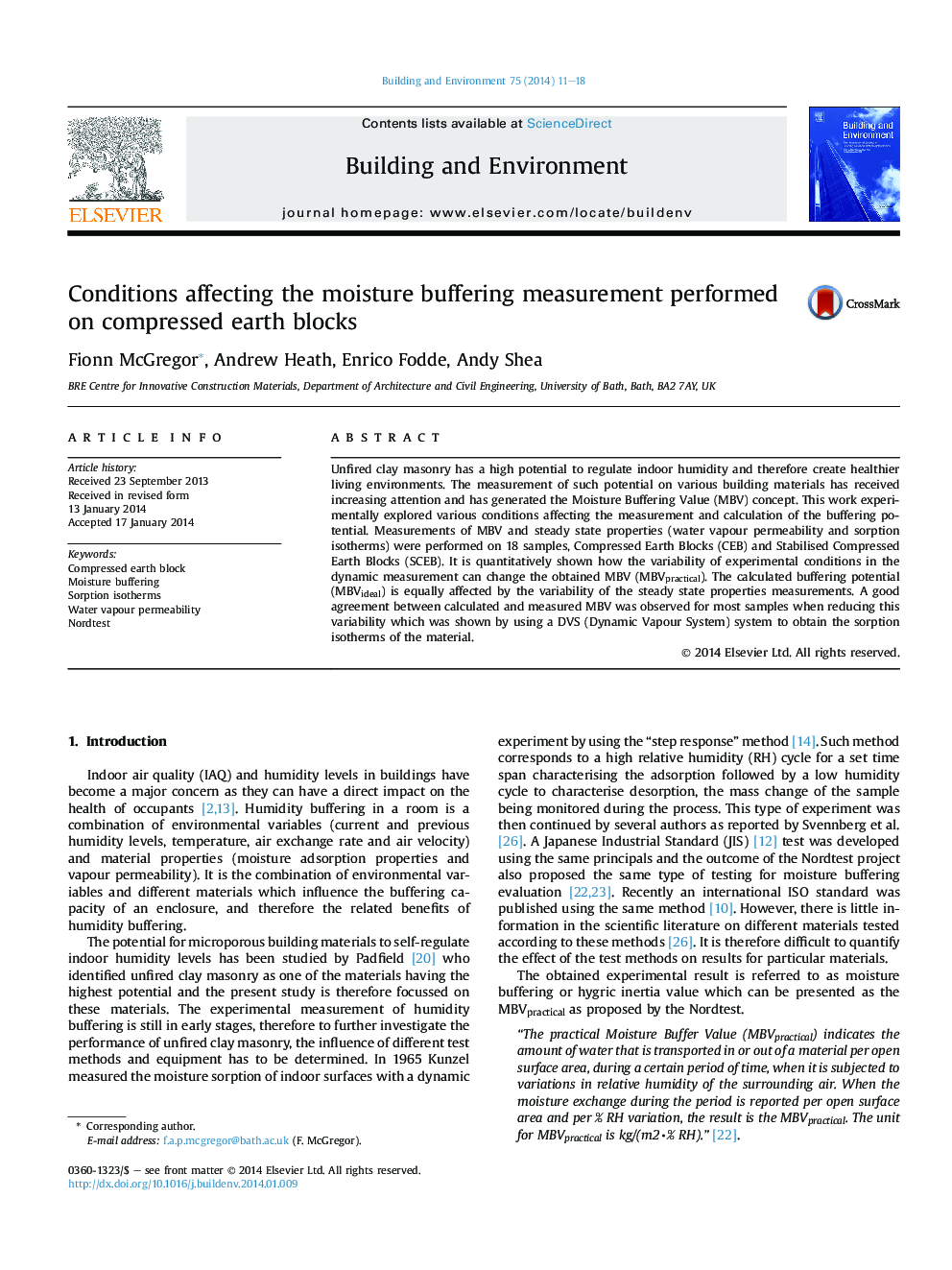| Article ID | Journal | Published Year | Pages | File Type |
|---|---|---|---|---|
| 248190 | Building and Environment | 2014 | 8 Pages |
•Capacity of compressed earth blocks to regulate indoor humidity.•Experimental measurements of moisture buffering values (MBV) are provided.•Conditions affecting these measurements are presented.•Steady state properties are measured and used to calculate theoretical MBVs.•On 3 out of 6 cases good agreement between experimental and theoretical values was found.
Unfired clay masonry has a high potential to regulate indoor humidity and therefore create healthier living environments. The measurement of such potential on various building materials has received increasing attention and has generated the Moisture Buffering Value (MBV) concept. This work experimentally explored various conditions affecting the measurement and calculation of the buffering potential. Measurements of MBV and steady state properties (water vapour permeability and sorption isotherms) were performed on 18 samples, Compressed Earth Blocks (CEB) and Stabilised Compressed Earth Blocks (SCEB). It is quantitatively shown how the variability of experimental conditions in the dynamic measurement can change the obtained MBV (MBVpractical). The calculated buffering potential (MBVideal) is equally affected by the variability of the steady state properties measurements. A good agreement between calculated and measured MBV was observed for most samples when reducing this variability which was shown by using a DVS (Dynamic Vapour System) system to obtain the sorption isotherms of the material.
